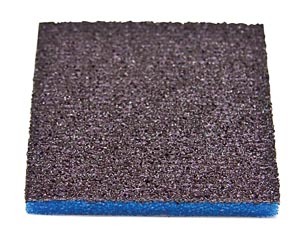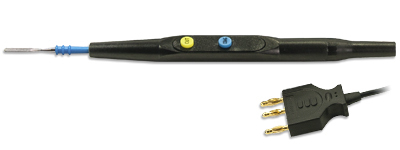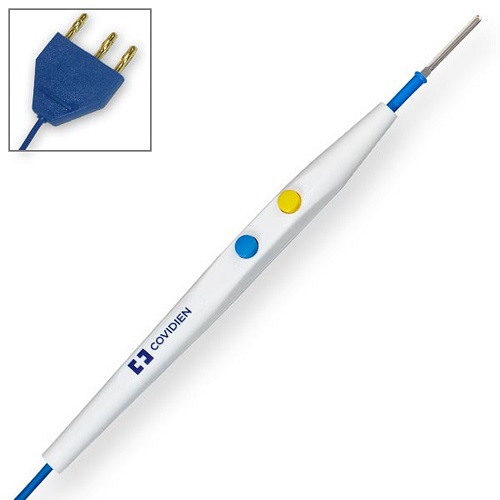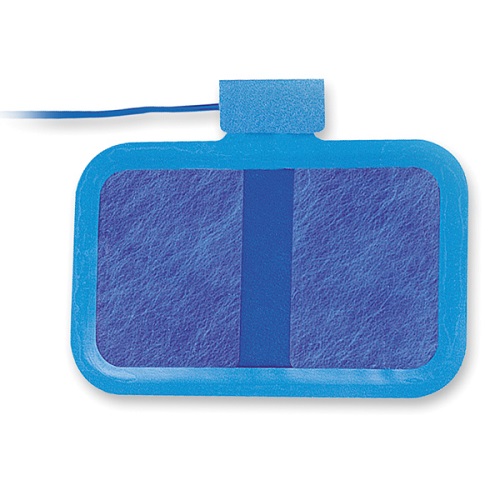 Loading... Please wait...
Loading... Please wait...Free Shipping on orders over $500
Categories
10 Procedures That Use a Medical Cautery Pen
Posted on 04/22/2019 10:11:07

A cautery pen is an essential tool for your medical and surgical teams. Surgical cautery pens–also known as cautery pencils or simply as cauteries–are handheld medical devices used to stop bleeding via heat conducted through the tip. These devices work especially well with small blood vessels and are commonly used within ophthalmic, dermatologic, plastic and general surgery, along with otolaryngology and urology. There are several common procedures that offer positive patient outcomes when a cautery pen is used.
10 Procedures That Use a Medical Cautery Pen
1.Removal of Skin Tags
2.Treating Small Angiomas
3.Removal of Pyogenic Granuloma
4.Treatment of Basal Cell Carcinoma
5.Wart Removal
6.Treatment of Sebaceous Hyperplasia
7.Treatment of Subungual Hematoma
8.Tumor Removal
9.Nasal Surgery
10.Most Ophthalmic Procedures
Cautery pen uses can be found in a variety of medical specialties and even within veterinary practices. Because of its focus on issues relating to the surface of the skin, dermatology is perhaps the field that can boast the most prolific use of cautery pens. If your health care practice performs any of the outpatient or in-office procedures below, it's important to make sure your team is provided with a proper supply of cautery pens.
What is Cautery?Today's cautery is a medical procedure that can cut and also seal–or cauterize–blood vessels and tissue through the use of a direct electrical current. For basically all of recorded history, cauterization has been used to stop heavy bleeding–dating as far back as Hippocrates. Ancient healers learned that the application of extreme heat to blood and surrounding tissue causes the blood to coagulate and the bleeding to stop. The practice of cauterization often caused more harm than good, dramatically damaging tissue and leading to further complications. Fortunately, technology has come a long way from the original red-hot lances, stones, and cauterizing knives heated over an open fire and applied directly to a wound.
While ligature of arteries eventually replaced cauterization as a more widespread method of stopping bleeding, the art of electrocautery is still used for specialized surgical procedures, especially those that deal with issues confined to the surface of a patient's skin.
What is Electrocautery?
The use of an electric current is an effective way to quickly produce the heat
needed to cauterize vessels and tissue. When a direct or alternating current
passes through a wire electrode, it generates extreme heat which can then be
applied to living tissue to encourage hemostasis or varied levels of tissue
destruction. This makes it an effective procedure for destroying both malignant
and benign skin lesions, excising tissue and, yes, controlling bleeding. The
resulting electrocoagulation can be ideal for clotting some of the smallest
blood vessels–those with diameters smaller than 2 to 3 mm, for example–during
either deep or superficial surgical procedures.
Modern cautery pens transfer electrical energy to a patient's tissue, which is then converted into molecular energy. This transfer of energy can help break down intracellular and extracellular proteins, which serves the same purposes as old-fashioned, primitive cauterization.
Electrocautery as a practice was introduced in 1926 by William T. Bovie, a Harvard researcher who wanted to help a colleague having trouble removing a tumor from a patient's head because of the excessive bleeding. By using electrocautery, the two were able to remove the tumor with very little bleeding, making the operation a major breakthrough in surgical technique.
The techniques associated with electrocautery have remained largely the same since 1926, though there have been many technological and safety improvements over time, as well as advancements in electrosurgical products and accessories. Cautery pens are typically small, battery-operated devices that use heat to destroy specifically targeted tissues. Use of a cautery pen is classified as monopolar electrosurgery because it directs heat and electricity to the surgical site through a single electrode. Its bipolar electrosurgery counterpart, on the other hand, directs the current interchangeably through a set of forceps.
Cautery pens are available today in both high and low-temperature options. The high-temperature versions, some reaching up to approximately 2000 degrees Fahrenheit, are extremely versatile and can be used for a wide variety of procedures, while low-temperature options, usually topping out around 1400 degrees Fahrenheit, are used chiefly in ophthalmology because of the pinpoint precision they can offer. Most medical facilities use disposable, one-time-use versions of cautery pens, and Bovie remains the market leader in the production of cautery pens. For the most part, cautery pens are packaged individually for single use before disposal and feature replaceable batteries and tips.
Typically, your health care team will administer injectable lidocaine before any electrocautery procedure. Combining lidocaine with epinephrine can further reduce blood loss during a procedure, but if operating on the tips of digits or the nose, then your team should avoid epinephrine. For smaller procedures, anesthesia may not be necessary, but this ultimately depends on the needs and preferences of the patient. The short bursts of power the patient experiences will be more uncomfortable for some than for others. You can also have the patient apply a topical anesthetic under occlusion at least one hour before the procedure to provide topical pain relief.
Your team should be properly trained in how to appropriately use a cautery tool. Improper use can result in burns and severe tissue damage. Most surgical cautery pens come with extensive instruction manuals, and you can also find plenty of additional training resources and videos to teach your team how to safely and responsibly use this convenient medical device.
10 Procedures That Use a Medical Cautery Pen
One of the primary advantages of using a disposable cautery pen is the ability to perform near bloodless surgery, which also minimizes the chances of post-surgical infection and complications. In addition, using a surgical cautery pen can help patients heal faster and reduce the chances of scarring. Surface-level skin lesions like skin tags, angiomas, cherry angiomas, sebaceous hyperplasia, actinic keratosis and even malignant lesions like basal cell carcinoma can easily be removed by using a medical cautery pen.
1. Removal of Skin Tags
One of the most common uses of a cautery pen is for the removal of skin tags. Your medical team can quickly and safely use a battery-powered cautery pen for this procedure. The high temperature of the electrode in the cautery pen burns away the cells of the skin tag, causing it to slough off. This procedure can be performed quickly and easily in a medical office with the use of a local anesthetic.
2. Treating Small Angiomas
Cherry angiomas, also known as senile or capillary angiomas, are cosmetic skin
lesions that have no malignant potential and create no symptoms for the
patient. However, some patients elect to have them removed for aesthetic
reasons. Larger cherry angiomas may need to be shaved first.
3. Removal of Pyogenic Granuloma
These benign vascular tumors respond well to electrocautery treatment. As a first step, the elevated portion of the tumor can be removed with a scalpel or a loop electrode, and then the base can be scraped with a sharp curette to remove any remaining tissue. After drying the base, bleeding can be stopped by using a cautery instrument.
4. Treatment of Basal Cell Carcinoma
As an alternative to scraping basal cell carcinoma using a sharp dermal
curette, a medical team can choose to use an elliptical excision via
electrosection, which provides the added benefit of an essentially bloodless
procedure. This procedure is effective for removing cancerous tissue that is
softer than the skin surrounding it – once a basal cell carcinoma has become
recurring, or is especially large or deep, it is no longer a viable candidate
for the cautery technique.
5. Wart Removal
A battery-operated cautery pen is a safe and effective medical instrument for
removing warts on various areas of the body. Successfully eradicating warts via
electrocautery typically takes only one treatment, which generally lasts no
longer than 20 to 30 minutes. When a local anesthetic is used, the procedure is
virtually pain-free for the patient.
6. Treatment of Sebaceous Hyperplasia
These benign overgrowths of oil-producing glands can be quite annoying for patients and are often common among older male patients and patients with excessively oily skin types. The medical team inserts the electrode at the tip of the cauterizing pen into the gland, heating until it is obliterated.
7. Treatment of Subungual Hematoma
Pooling of blood underneath the surface of a fingernail or toenail can be caused by a crushing injury or any other form of blunt trauma to a digit. Patients sometimes may also develop subungual hematoma from wearing shoes that are too small. The health care professional can press the heated tip of the surgical cautery pen against the surface of the nail. By applying continuous light pressure, the cautery pen will melt a small opening through the nail, which allows pooled blood to escape quickly and painlessly for the patient.
8. Tumor Removal
A cautery pen can aid in the successful removal of abnormal tissue growth, especially within sensitive environments, like the brain, and other areas that are typically difficult to reach and require minimal bleeding.
9. Nasal Surgery
Medical professionals may use a nasal cautery procedure to treat patients who suffer from frequent nosebleeds, which are typically caused by exposed blood vessels within the nasal cavity. This is another relatively quick procedure that can occur in a physician's office with a local anesthetic. However, when combined with other nasal procedures, such as sinus surgery or nasal endoscopy, your team may prefer to complete the procedure in an operating room with the patient under general anesthesia.
10. Most Ophthalmic Procedures
Cautery plays an essential role in the majority of ophthalmic surgeries and procedures . Surgeons can use ophthalmic cautery pens to close conjunctival incisions, as a surgical marker, or to induce punctal stenosis in patients who present with dry eye. When used as a surgical marker, a portable cautery pen can create an ink-free dot on the eye that provides a reference point for a variety of procedures. Advantages are that this type of surgical marker won't smear, and it will last for the duration of a surgical procedure, including intraocular lens implantations.
Cautery
Pens are Safe and Effective
A cautery pen collection is a valuable part of
your
medical team's surgical toolbox
. Electrocautery by using a high temp
cautery pen is a safe and effective approach to many common medical procedures
your health care team may need to perform. This is especially true if your
practice is within the field of dermatology or ophthalmology.
Electrocautery requires minimal training, so having a robust collection of cautery pens at your team's disposal means empowering more individuals within your team to perform a wide variety of procedures. Since a cautery pen is best used for the treatment of small and superficial lesions, it lends itself well to both outpatient procedures and in-office treatments.
Cautery Pens and Accessories
Bovie Medical, Conmed, and Valleylab have electrosurgical product lines from electrosurgical generators , cautery pencils, electrosurgical tips, return pads, and more.
Here are a few of commonly used electrosurgical accessories. Bovie manufactures more electrosurgical cauteries than any other manufacturer. The Bovie High Temperature Cauteries-Fine Tip are widely used and operates at 2,200 degrees Fahrenheit. The Bovie Cautery High-Temp Loop Tip and Bovie Disposable Electrosurgical Scratch Pads are commonly used accessories.


The Bovie Autoclavable Reusable Electrosurgical Pencil is a good example of a widely used cautery pen.

The Conmed Hyfrecator 2000 Electrosurgical Unit is a electrosurgical generator that is commonly seen in physician offices all over.

Commonly used Valleylab products are the Valleylab Electrosurgical Pencil Button Switch & Holster and Valleylab REM Polyhesive Adult Patient Return Electrode .


The experienced staff at USA Medical and Surgical Supplies can help you select electrosurgical generators, electrosurgical pencils, cautery tips, return pads, and more. We have extensive experience with many medical products and can help recommend medical supplies and equipment. Please contact us if you have any questions about the right equipment or supplies. Call us today at 1-866-561-2380, or email us.



